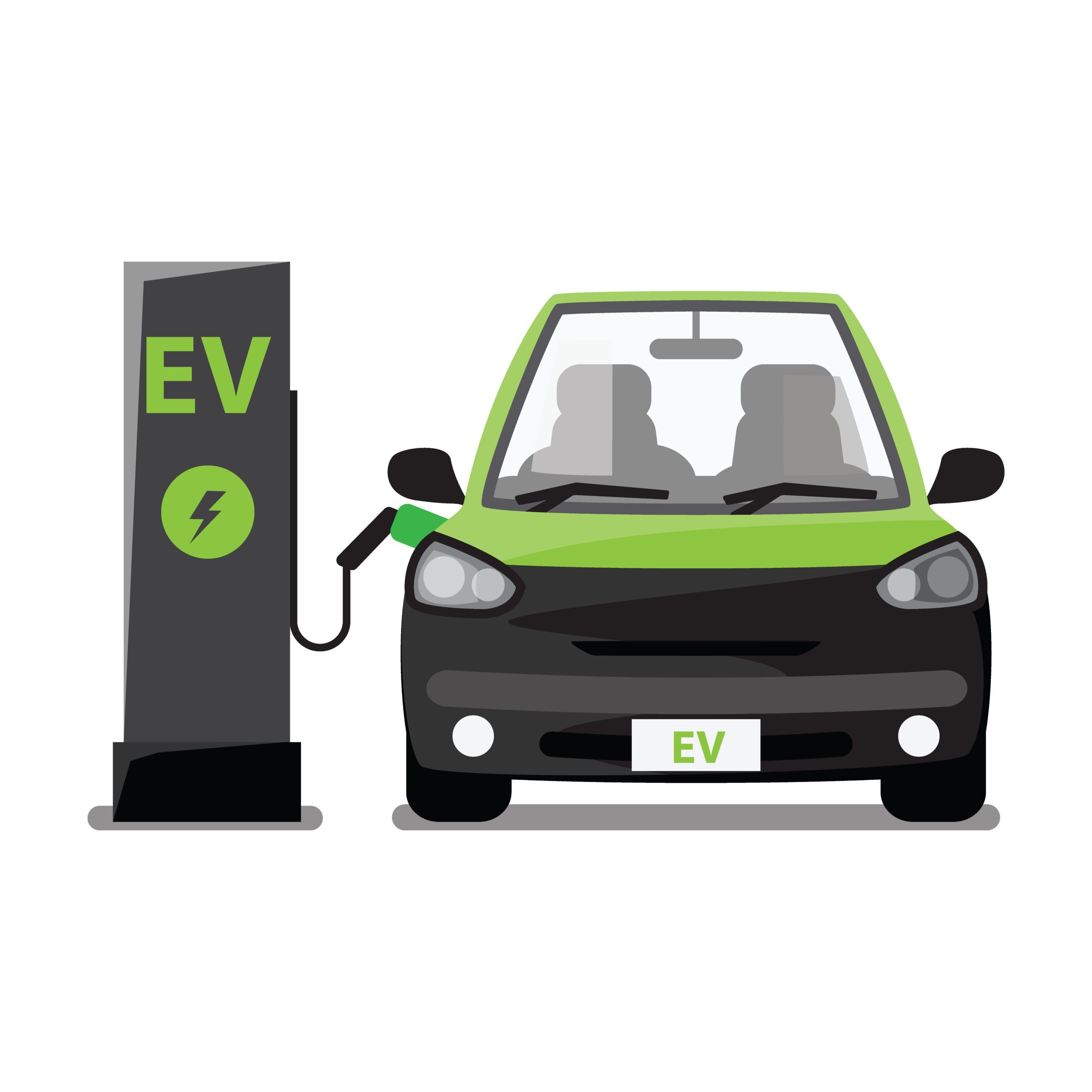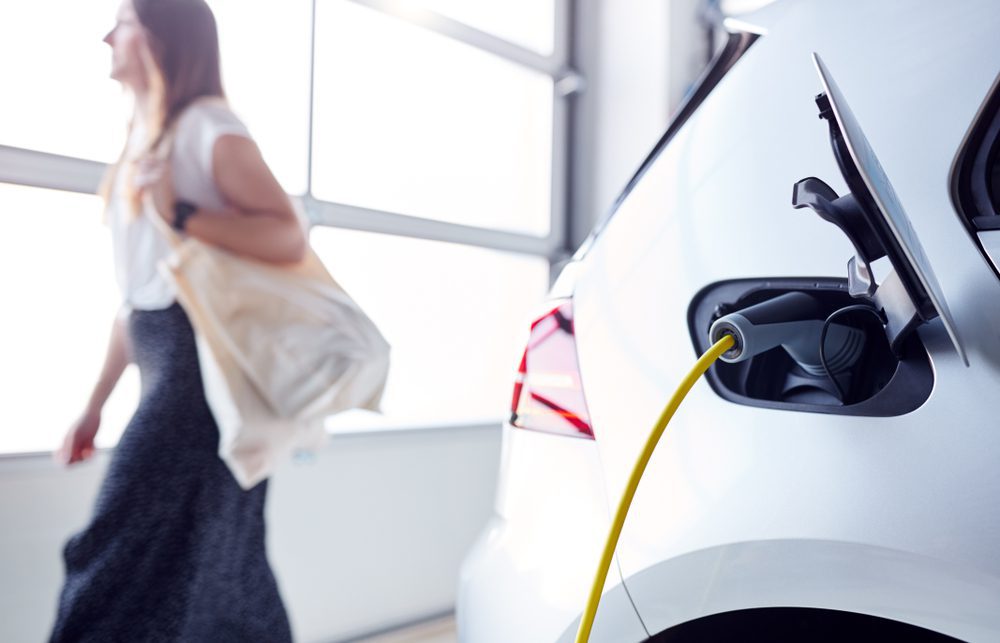If it hasn’t happened already, a car with a plug will show up on your lot sooner rather than later. And, while it’s true that most customers who purchase an EV or plug-in hybrid EV comes in knowing they want one, there are some customers who are curious and, maybe tempted to consider a purchase. Don’t lose that opportunity! Ask a customer about his or her level of interest and be prepared to give an “elevator speech” on the value of these cars.
Here’s a quick lesson to help you make a sale.
EVs
An EV is exactly what the name implies. It’s an electric car that has an electric motor rather than an internal combustion engine. Instead of a gas tank, it has a battery pack and a charge port (or ports) that replaces the fuel filler. Basically, an EV has three major differences that can repel or befuddle a buyer. Understanding how the pieces work together is crucial.
Charging and Charging Standards
Charging the car is one of the most common questions. So, let’s start at the charge port. The first thing to keep in mind is that an electric car may have more than one port. Why have more than one? The answer is there are different charging levels.
When it comes to charging levels, there is Level 1 (120v), Level 2 (240v), and Level 3 fast charging (480v) which is currently comprised of three different standards.
 In cars with multiple ports, the main charge port is universal to every EV, the SAE J1772. This port accepts power from a 120v household outlet or from a 240v charger. If there is a second charge port, this is an indication that the car is equipped with CHAdeMO fast charging as CCS fast charging incorporates its fast charging port into the standard J1772 port.
In cars with multiple ports, the main charge port is universal to every EV, the SAE J1772. This port accepts power from a 120v household outlet or from a 240v charger. If there is a second charge port, this is an indication that the car is equipped with CHAdeMO fast charging as CCS fast charging incorporates its fast charging port into the standard J1772 port.
- Level 1, 120v – 120v charging is done via a charger cable that comes with the car. It takes a very long time to fully charge an EV, including those with smaller batteries. A good rule-of-thumb is that this method of charging is good for about 4-5 miles of driving per hour of charging. The reality is this is only a viable charging method for those who drive fewer than 20-25 miles per day or whose cars are idle for long periods of time.
- Level 2 – 240 Volt – 240v charging is accomplished via Electric Vehicle Supply Equipment (EVSE) and is seen frequently in parking lots. This method charges the batteries at a rate that is frequently 4-5 times faster than 120v charging.
- Level 3 – Fast Charging (DCFC) Fast charging allows for the the batteries of an EV to be charged to 80 percent in a relatively short period of time. This is where the charging world gets a little murky. The time is entirely dependent on the size of the battery pack as measured in kWhs and the output of the fast charger. DCFC also makes owning and using an EV much easier and more convenient because of the dramatically shortened charging cycles.
Fast charging bypasses the on-board charger and establishes a direct connection with the battery in order to recharge quickly.
When it comes to fast charging, there are three different standards that are in no way compatible with one another. It’s really important to understand the technology.
- CHAdeMO. Being it’s a Japanese standard, EVs from Japan like Nissan’s Leaf and Mitsubishi’s iMiev make use of it. With its diminutive battery, an 80 percent charge can be had in between 15 to 25 minutes. CHAdeMO requires its own unique port. Vehicles equipped with this technology always have two separate charge ports. CHAdeMO is now becoming standard equipment on cars. Informed buyers will ask how your inventory is equipped in terms of fast charging.
- CCS. CCS is an acronym for Combined Charging System and gets its name because it uses the 120v/ 240v charging port in conjunction with two more connectors. Because of this setup, cars with this standard tend to have just one port for charging. CCS is an SAE standard and is most often used by American and European manufacturers. Like CHAdeMO, CCS is increasingly offered as standard equipment because so many buyers are demanding fast charging. CCS allows for recharging to 80 precent in a short period of time.
- Tesla. Tesla’s SuperCharger Network works with Teslas and only Teslas.
The On-Board Charger
This on-board charger is what “catches” the electricity as it’s coming into the car and transmits it to the battery pack. This component is the most crucial part in how fast an electric car charges when attached to a 240v charger.
The Battery Pack
As I just mentioned the battery pack capacity in an EV is measured in terms of kilowatt hours (kWh). Nissan’s Leaf has historically had a 24 kWh battery. What does that mean?
It’s hard to break down because each car is different in terms of weight, wind resistance and rolling resistance. So, when communicating this to a customer, a good rule-of-thumb is that a 30 kWh battery will allow the average EV to comfortably cover around 100 miles of combined city and highway driving.
Selling New EVs
For new car sales, there are newer and bigger battery packs in the BMW i3 BEV, Ford Focus Electric and Nissan Leaf that help diffuse any “range anxiety”. Also, there’s a $7,500 federal tax credit that dramatically offsets the cost of the car. Certain states also offer tax credits, so know what’s available in your state. And, of course the leasing option, which takes into account these available credits, is a huge selling tool.
Selling Used EVs
The used market is somewhat different in nature. There are no tax credits but there are great prices due to depreciation. As a result, there are lots of EVs with 22 and 24 kWh batteries out there and many of these are spectacular bargains. Most of these cars are off-lease units and have relatively low mileage.
One major concern that buyers of used EVs will have is the condition of the battery. Many of these potential customers will want to check the battery for degradation so you will be well served to make sure that any EVs on your lot are fully charged.
Plug-in Hybrid Electric Vehicles (PHEV)
By comparison, PHEVs are an easier sale but much more complex. Essentially, PHEVs are short range EVs with battery packs of 16 kWh and smaller. After their battery has been expended, they become normal hybrids. These cars tend to embody the best of both worlds by combining a commute that is nearly or completely gasoline-free with the option of driving cross-country.
PHEVs are becoming increasingly popular and all current PHEVs for sale in the U.S. offer charging via 120v and 240v with none having the availability of fast charging. However, as a bonus, many are eligible for federal tax credits up to $4500. Additionally, many states also offer a tax credit.
A Variation – Extended Range EVs
There needs to be a distinction made between PHEVs and Extended Range EVs. Extended Range EVs use a gasoline engine to generate electricity to replenish the battery pack that the car, in turn, uses to drive the electric motor.
There are benefits for both you and your customer
Whether it’s purely electric or a plug-in hybrid, being able to demonstrate this technology to your customers shows you know and understand the product. And, if you can show your customers the economic benefits to these advanced drivetrains and the benefits surrounding them, the end result is a win-win situation.








